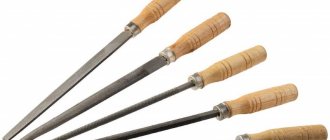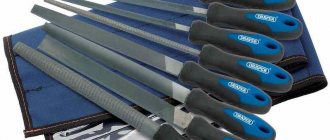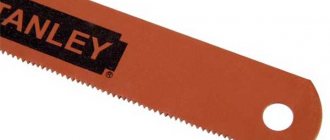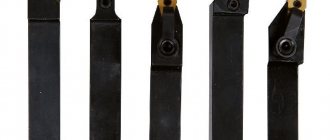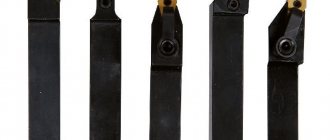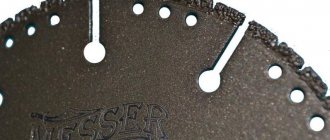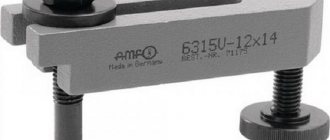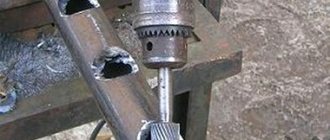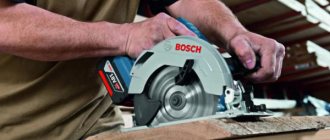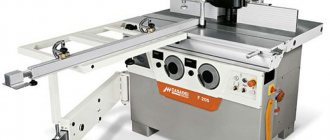What is a file and what is it for?
A tool designed to remove a layer of metal from a workpiece is called a file. It is a metal strip on which a so-called notch is applied. It consists of cutting teeth made according to certain rules described in GOST 1465-80.
To control it, use a handle mounted on a specially formed shank. Several grades of steel are used for manufacturing. As a rule, this is steel containing 1.1 - 1.25% carbon. The steel grade can be ШХ15 or У10А, the latter steel is classified as unalloyed improved.
One of the main requirements for it is high hardness. That is why after heat treatment it is not tempered. In working condition, the surface has a hardness of 54-58 HRC.
The handle with which the control is performed can be wooden, plastic, or metal.
Set of files with wooden handles
They are produced in different shapes, lengths and with different parameters of cutting teeth.
It should be noted that the abundance of this product allows you to perform many types of work, in particular, it can be used to remove various types of contaminants, grind workpiece planes, remove flash and sprues. Using these products of special shapes, it is possible to sharpen saw chains and process gears.
It should be noted that it can be found in almost any home, garage and of course in production.
What is it and why is it needed
Structurally speaking, an ordinary file is a simple tool because it is a steel plate on which a notch is applied. The latter can be of different depths and profiles, and this will determine the area of application of the tool. During the work, it should be held by the handle, which is made of wood or even of various composite materials.
But the tool that is required for roughing (that is, rough work) may have a pair of handles and even, in appearance, resemble a plane that is familiar to everyone. A file is needed in order to remove the thin top layer of wood, and thereby level the surface of the workpiece, as well as give it the desired shape. In general, a grinding machine does all this, but it will be very problematic to do such delicate work.
Classification of files by section shape
The parts processed with it can have different shapes. These can be sheets, profiles, etc. That is why, for productive work, manufacturers produce products of different shapes and geometric sizes. One of the classification options is by section shape. Manufacturers market products of the following types:
- flat;
- square;
- round;
- triangular;
- special;
- oval and some others.
Triangular file
Square metal file
Round file
In addition to the fact that products are distinguished by cross-sectional shape, they have different lengths and shapes. The minimum length is 50, maximum 500 mm. By the way, only the part on which the working teeth are applied is measured.
There is some relationship between the length of the working part and the size of the teeth. The longer the tool, the larger the size of the cutting tooth. Large is used when there is a need to remove a large amount of metal. But, after processing the material with a tool with large teeth, the surface turns out to be rough and scratched, and there is no need to talk about the accuracy of the processing. In cases where it is necessary to obtain a higher quality surface, products with fine teeth, for example velvet, are used.
Round velvet file
That is, processing is carried out in at least two stages using different types of files. At the first stage, rough processing is performed, and the finishing of the surface of the part is carried out by bringing the workpiece to the required parameters.
Classification Features
According to their scope and main purpose, files are divided into several large categories:
- needle files;
- rasps;
- special purpose;
- general purpose;
- machine (see photo).
The name of the last type of tool speaks for itself, but the remaining categories should be considered in more detail (also presented in table form in the photo).
The most common are needle files . There are more than ten subspecies, for example, flat, square, oval, round, semicircular, hacksaw, triangular, etc. All these types of files differ in their notch and short length of the bar. They are also equipped with a double notch, but the ribs of flat-type tools can also be single. Needle files are mainly used for processing small parts or bottlenecks when ordinary metalworking tools do not allow this.
As for rasps, they are divided into three subspecies (general purpose, shoe, hoof rasps) and are distinguished by large notch teeth and long length. Most often, round and semicircular rasps, as well as flat ones with a sharp or blunt tip, are used for work.
Special-purpose metalworker's files are mainly used for industrial purposes , since their main purpose is to eliminate large gaps when fitting grooves, as well as surface curvature when working with non-ferrous metals. Based on their purpose, flat files and grooved files, as well as bars, are used.
General purpose tools are most often used during general plumbing work. They come in different lengths, can have different bar shapes and literally any number of notches. The latter for a device of this type is performed by the notching method, ensuring the formation of a cross (double) notch.
File Features
Handmade products of this type can be divided into the following categories:
- Locksmith - we can say that this is a multi-purpose tool. It can be found in almost any enterprise, workshop, or household.
- Needle files are small-sized products designed for processing small parts. They are widely used by engravers, jewelers, and pattern makers. In addition, needle files are indispensable when processing in hard-to-reach places.
- Sharpeners - they are used for sharpening saw chains, hacksaws, etc.
- Rasps are products with the largest teeth and are used to work with non-metallic materials, that is, in cases where the usual one is not suitable for solving the assigned production or household tasks.
Bench square file
As already noted, working teeth are applied to the working surface. It can be single or double. For processing soft materials, a tool with an arc cut is used.
Point teeth are made on the surface of the rasp.
Types of cuts on different files
Modern files are characterized by various types of notches , but the most common are the following.
- Single notch. This tool is mainly used to remove sawdust, equal in size to the teeth on the working surface. This device is not easy for the average person to use, so it is mainly used by specialists for processing wood, plastic or very soft metals (see photo).
- Double notch, also called cross cut. In this tool, the main deep notch alternates with a small auxiliary notch applied at a certain angle. Thus, the intersecting notches additionally grind the chips formed during the working process, so that the tool is suitable for working even with very hard metals and alloys (see photo).
The size of the tool teeth directly depends on the size of the notches (the larger the teeth, the fewer the number of file notches). Based on the size of the teeth, the tool is divided into numbers from 1 to 5 .
Numbers 0 and 1 correspond to the largest teeth. This type of tool is usually used if a worker needs to quickly get rid of a large layer of working material. In such cases, this type of device is simply irreplaceable, but it also has a clear drawback - the accuracy of processing the part is quite low. Numbers 2 and 3 correspond to medium-sized teeth, and a precise tool is used when interacting with materials of low density, when it is necessary to remove 0.015 - 0.05 mm from the surface of the part. But for finishing the material, files number 4 and 5 are used with the highest processing precision, popularly called velvet files (see photo).
Types of notches
There is a classification option based on the type of notch applied. A little has already been said about single and double execution.
Meanwhile, there are two types of double notching. The first is called crossover. This is, in fact, a combination of a single and a second, small (auxiliary) one, it is performed at an angle to the base one. At the intersection points of the grooves, the resulting chips are broken. This type is most often used in the production of bench files.
The second version of the double notch is called Oberg. Auxiliary grooves are less frequent. In fact, this option can be called intermediate between single and double notches in terms of the quality of part processing.
Numbering of notches
The application is determined by taking into account the type, size and configuration of the applied teeth. To obtain a working surface, various technologies are used:
- roll;
- milling;
- slicing and many others.
Many manufacturers, in order to increase labor productivity, use specialized equipment that allows them not only to speed up the production of these products and expand the number of their types, but also to maintain their quality at the appropriate level.
The size of the tooth directly depends on the size and type of notch applied per unit length, usually 1 cm. That is, the fewer grooves per centimeter of length, the larger the size of the cutting tooth. In practice, files with cuts from 0 to 5 are used.
Notch No. 2
The largest types include teeth with No. 0 and No. 1. They are used when it is necessary to remove a layer of metal from 0.05 to 0.1 mm in one pass. Such a tool has the following disadvantage - low accuracy, it ranges from 0.1 to 0.2 mm.
Files with tooth sizes No. 2 and No. 3 are used in cases where it is necessary to remove a layer of metal from 0.02 to 0.06 mm. The accuracy of such a tool is from 0.02 to 0.05 mm.
For surface finishing, a product is used that allows you to remove a layer of metal from 0.01 to 0.005 mm. An instrument of this type is sometimes called a velvet instrument.
Geometric parameters of the notch
In accordance with the requirements of GOST 1465-80, set out in clause 2.1. On the surface of the tool, the notch is applied at an angle of 65 degrees relative to the axis.
In addition, it is also specified what technology it should be used to carry out. For example, round files can be made either by knurling or threading. All other types must be made using a notch.
Classification of files
The entire instrumental variety can be ordered by classifying it. In practice, slightly different types of classification are used.
The following classification criteria are most often used:
- appointment;
- shape of the working part;
- types of notches;
- material;
- size.
Within groups there is a division according to specific characteristics. State standard GOST 1465-80 regulates the main characteristics. The defining indicators are “class” and “number”.
GOST 1465-80 Files. Specifications
1 file 1.01 MB
In professional language, the product is defined by the term “Multi-blade tool”.
File appearance
Today, a large number of this tool of various shapes are used. It can be classified not only by the shape of the section, but also by the shape of the bar itself.
Use of files of various shapes
Indeed, the shape of the bar largely determines the scope of application. That is, flat, used for processing flat surfaces located inside or outside the part. Square ones are used to develop holes of various shapes. Triangular has found its application in the processing of grooves and other parts. In addition, it is used for sharpening saws and other tools.
Sharpening a saw chain with a file
Semicircular, which can have a rectangular or pointed shape, are designed to work with convex or concave surfaces.
Round, used for working with round or oval holes. Diamond-shaped files are used to process gears.
Such an abundance of this tool (shape, size, etc.) can lead to confusion. And many sincerely believe that you should keep as many files as possible in your home workshop. But this is nothing more than a misconception. In fact, most surface treatment work can be done using tools of the following shapes - straight, round and triangular.
Set of files
By the way, the service life depends on the material, heat treatment parameters and the size of the notch.
Features of using different files
In the process of work, the shape of the bar plays an important role, because it is from this that the scope of application of the file can be determined. According to the method of use, devices are divided into:
- flat standard or flat pointed (for processing external and internal flat surfaces);
- square (for sawing square, rectangular and polygonal holes);
- round (for processing small round and oval holes, as well as concave surfaces with a small radius);
- semicircular (for processing large holes and concave surfaces with a large radius of curvature);
- rhombic (for working with gear-type parts);
- triangular (for processing hard-to-reach places, for example, grooves, grooves and the outer sides of parts with an acute angle);
- hacksaws (for making grooves and narrow grooves, processing internal corners and planes in various holes, mainly rectangular, square and diamond-shaped).
The service life of the device directly depends on the manufacturer, the quality of the notching and heat treatment.
Teeth size
In addition to the tooth size, products of this class differ from each other in the cutting density.
For rough surface treatment, products with large notches are used. It is called No. 1; there are from 5 to 15 teeth per centimeter. Its use makes it possible to remove a fairly thick layer of material in one pass, especially from soft materials; I call files of this type wrangler files.
Files No. 2 have from 14 to 25 grooves per centimeter of surface. This is perhaps the most popular type of this instrument. In fact, this file is most often used in practice.
Double cut file
Indeed, it can be used to process almost any material. But there is one subtlety: when working with soft metals or wood, after a fairly short time the notch will be clogged with processing waste. This is why it is necessary to clean the work surface with a wire brush.
Products with notches from 26 to 80 grooves per 1 centimeter are used for final surface treatment. After proper processing, there are practically no traces left on the surface.
Sharpening a cutting tool using a file
The group of cutting tools includes cutters, cutters, axes, saws and many others. The operating mode and the material from which the cutting tool is made determine the frequency of its sharpening. This operation is performed in two passes. The first is the sharpening itself, the second is bringing the cutting edge to the necessary requirements. That is, it must be brought into working condition. The cutting edge must be sharpened at a certain angle, it must have a certain shape. These parameters are determined by the material of the part.
Sharpening a shovel with a file
During the finishing process, burrs formed during the primary sharpening process are removed from the cutting edge.
For finishing cutting tools, products with fine notches are used. These can be files, bars and other abrasive materials. Finishing operations can be performed either using special equipment or manually.
Which notch to choose
When choosing any tool, first of all you need to understand what goals should be achieved when processing the part. Files are most often used to remove layers of material. Undoubtedly, if we are talking about removing material within 0.1 mm, then it makes sense to use files with a notch of No. 0 or No. 1.
File with cut No. 3 for metal
To perform more delicate work, for example, preparing the surface for coating, you can use a tool with a notch No. 2 - No. 4.
To perform work related to threading the cutting edge, grinding the surface and other particularly precise work, so-called velvet tools are used.
How to make a file handle
Those who often use a file in their work sooner or later are faced with the fact that its handle becomes unusable and therefore the question of replacing it arises. Of course, you can go to a hardware store and buy a ready-made part. But this is not always the best solution. As a rule, they sell handles made of plastic or unknown types of wood. This is why many people prefer to make pens with their own hands.
Material selection
Practice shows that the optimal material for a handle can be considered materials such as walnut, maple. These are quite durable materials; in addition, they have an attractive texture.
Handle walnut
But in addition to the material for the handle itself, you will need to select glue. To connect the component parts of the tool, it is advisable to use adhesives based on epoxy resin.
How to make it
To make a handle, you can use a lathe. If this is not possible, then you can remember your childhood and sharpen it with a knife.
When making a handle, it makes sense to maintain the following dimensions:
- working part diameter 25 – 30 mm;
- working part length 120 – 150 mm;
The depth of the hole for securing the tool shank should be slightly longer than the shank itself.
The final operation in the manufacture of a file handle is to treat its surface using abrasive sandpaper. This is necessary so that there are no burrs left on the surface of the handle that could dig into the worker’s hand.
